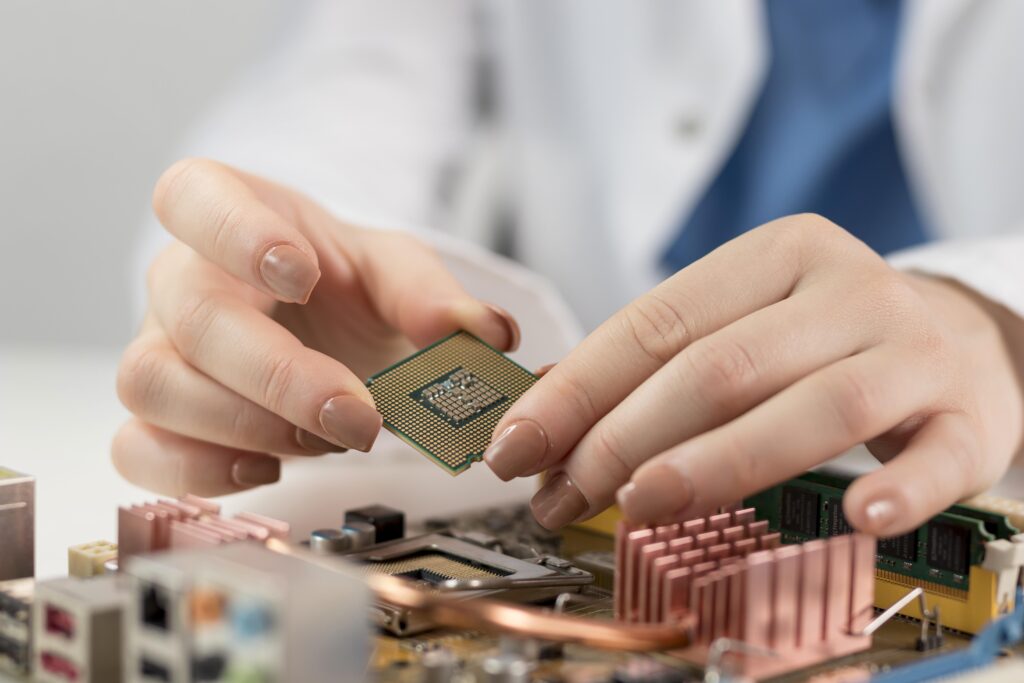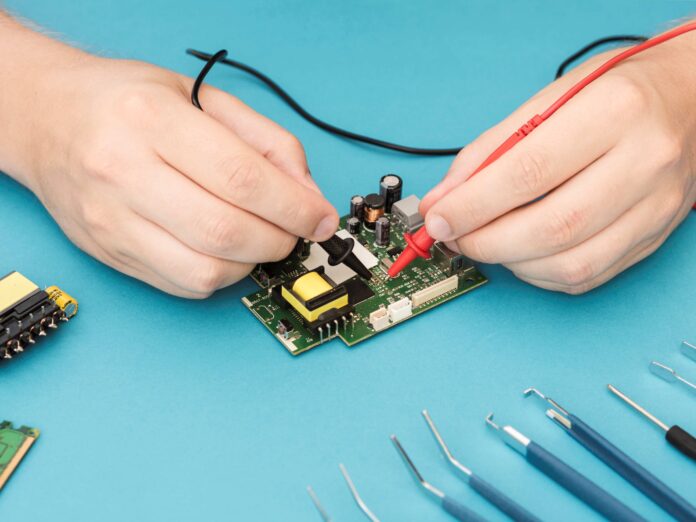In the ever-evolving world of PCB design, innovation and optimization are essential for meeting the increasing demands for compact, high-performance electronic devices. One of the most prominent advancements in this field is via-in-pad technology. This article delves into what via-in-pad technology is, how it works, its advantages, and why it has become a critical component in modern PCB prototyping and production.
What is Via-in-Pad Technology?
Via-in-pad is a manufacturing technique where the via—a hole used to electrically connect different layers of a printed circuit board (PCB)—is directly placed within the pad of a component. Traditionally, vias are located outside the pads, connected through traces. However, as designs grow smaller and more complex, placing vias in the pads provides significant benefits, particularly for high-density interconnect (HDI) PCBs.
This method requires special attention during the PCB manufacturing process to ensure the via is filled, plated, and planarized correctly. These steps prevent issues such as solder wicking, which can lead to poor solder joints.
How Via-in-Pad Technology Works
The via-in-pad process typically involves the following steps:
- Drilling the Via: Using laser or mechanical drilling methods, a hole is created in the exact location of the pad.
- Filling the Via: The via is filled with a conductive or non-conductive material. Conductive fills are ideal for thermal management and electrical performance, while non-conductive fills are used to prevent solder wicking.
- Plating: The filled via is plated with copper to ensure connectivity between layers.
- Planarization: The pad is polished to create a flat, smooth surface for proper component placement and soldering.
Advantages of Via-in-Pad Technology
1. Enhanced Signal Integrity
One of the primary benefits of via-in-pad technology is its ability to improve signal integrity. In high-speed PCB design, reducing the length of signal paths is critical to minimize noise and crosstalk. By placing vias directly in the pads, engineers can shorten these paths, thereby improving the overall performance of the PCB assembly.
2. Better Thermal Management
Heat dissipation is a significant concern in modern PCB design due to the increasing power density of electronic components. Conductive via fills allow heat to transfer efficiently from the component through the via to the thermal plane, reducing the risk of overheating.
3. Compact and Space-Saving Designs
With the rise of portable and wearable devices, the demand for smaller PCB layouts has grown. Via-in-pad technology enables compact designs by eliminating the need for additional traces and spacing for vias. This is especially advantageous for HDI designs where real estate on the board is at a premium.
4. Simplified Routing
By using via-in-pad, designers can reduce the complexity of routing traces, especially in multi-layer PCBs. This simplification can result in faster design cycles and fewer errors during the PCB prototyping phase.
5. Increased Component Density
Via-in-pad technology allows for tighter component placement, enabling higher density designs. This is particularly beneficial in applications like flex PCBs, smartphones, and other high-performance devices where space is limited.
Applications of Via-in-Pad Technology
Via-in-pad technology is widely used in various applications, including:
- HDI PCBs: Common in advanced technologies like smartphones, tablets, and medical devices.
- RF and Microwave Designs: Where signal integrity and performance are critical.
- Automotive Electronics: Supporting compact and reliable designs for high-performance vehicles.
- Aerospace and Defense: Enabling lightweight and compact systems for mission-critical applications.

Challenges in Implementing Via-in-Pad Technology
While via-in-pad offers numerous benefits, it also presents some challenges that designers and manufacturers must address:
1. Cost Implications
The via-in-pad process requires specialized equipment and materials, such as via fill paste and advanced polishing tools. These additional steps can increase the cost of PCB manufacturing.
2. Process Complexity
Filling, plating, and planarizing vias add complexity to the PCB prototyping process. Manufacturers must have the expertise and facilities to ensure these steps are executed correctly.
3. Risk of Solder Voids
Improperly filled or plated vias can result in solder voids, leading to poor connections. Rigorous quality control is necessary to avoid such issues.
4. Limited Supplier Expertise
Not all manufacturers have the capability to implement via-in-pad technology effectively. It is crucial to work with a PCB fabrication partner experienced in advanced techniques.
Design Considerations for Via-in-Pad Technology
When incorporating via-in-pad into your PCB design, consider the following:
- Material Selection: Choose appropriate via fill materials based on your design’s thermal and electrical requirements.
- Pad Sizing: Ensure pads are large enough to accommodate vias without affecting component placement or solderability.
- Layer Stackup: Optimize your layer stackup to take full advantage of via-in-pad’s space-saving benefits.
- Collaboration with Manufacturers: Involve your PCB prototyping and manufacturing partner early in the design process to address any potential challenges.
Comparing Via-in-Pad to Traditional Via Placement
| Feature | Traditional Vias | Via-in-Pad |
| Space Efficiency | Less efficient | Highly efficient |
| Signal Integrity | Standard | Improved |
| Thermal Management | Limited | Enhanced |
| Manufacturing Cost | Lower | Higher |
| Design Complexity | Moderate | Simplified |
Future Trends in Via-in-Pad Technology
As the demand for miniaturization and performance continues to grow, via-in-pad technology will likely become even more prevalent. Advances in materials and manufacturing techniques will reduce costs and improve the scalability of this technology for mass production. Additionally, innovations in PCB design software are making it easier for engineers to incorporate via-in-pad technology into their designs.
Conclusion
Via-in-pad technology has transformed the landscape of PCB design by addressing the challenges of miniaturization, thermal management, and high-speed performance. While it requires specialized knowledge and manufacturing capabilities, its advantages far outweigh the challenges, especially for high-density, high-performance PCB prototyping and production.
By understanding and leveraging via-in-pad technology, designers can create compact, efficient, and reliable circuits that meet the demands of modern electronics. As this technology continues to evolve, it will undoubtedly play a crucial role in shaping the future of PCB fabrication and design.
